

Ingeometry, a uniform honeycomboruniform tessellation or infinite uniform polytope, is a vertex-transitive honeycomb made from uniform polytope facets. All of its vertices are identical and there is the same combination and arrangement of faces at each vertex. Its dimension can be clarified as n-honeycomb for an n-dimensional honeycomb.
Ann-dimensional uniform honeycomb can be constructed on the surface of n-spheres, in n-dimensional Euclidean space, and n-dimensional hyperbolic space. A 2-dimensional uniform honeycomb is more often called a uniform tiling or uniform tessellation.
Nearly all uniform tessellations can be generated by a Wythoff construction, and represented by a Coxeter–Dynkin diagram. The terminology for the convex uniform polytopes used in uniform polyhedron, uniform 4-polytope, uniform 5-polytope, uniform 6-polytope, uniform tiling, and convex uniform honeycomb articles were coined by Norman Johnson.
Wythoffian tessellations can be defined by a vertex figure. For 2-dimensional tilings, they can be given by a vertex configuration listing the sequence of faces around every vertex. For example, 4.4.4.4 represents a regular tessellation, a square tiling, with 4 squares around each vertex. In general an n-dimensional uniform tessellation vertex figures are define by an (n–1)-polytope with edges labeled with integers, representing the number of sides of the polygonal face at each edge radiating from the vertex.
| 2-dimensional tessellations | ||||
|---|---|---|---|---|
| Spherical | Euclidean | Hyperbolic | ||
Main article: Uniform polyhedron
|
Main article: List of uniform tilings
|
Main article: Uniform tilings in hyperbolic plane
| ||
| Coxeter diagram | ||||
| Picture | 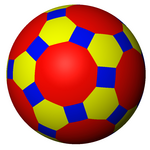 Truncated icosidodecahedron |
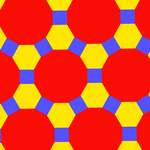 Truncated trihexagonal tiling |
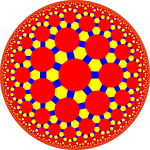 Truncated triheptagonal tiling (Poincaré disk model) |
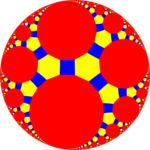 Truncated triapeirogonal tiling |
| Vertex figure | 
|

|

|
|
| 3-dimensional honeycombs | ||||
| 3-spherical | 3-Euclidean | 3-hyperbolic | ||
Main article: Uniform polychoron
|
Main article: Convex uniform honeycomb
|
Main article: Uniform honeycombs in hyperbolic space
and paracompact uniform honeycomb
| ||
| Coxeter diagram | ||||
| Picture |  (Stereographic projection) 16-cell |
 cubic honeycomb |
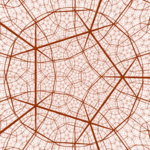 order-4 dodecahedral honeycomb (Beltrami–Klein model) |
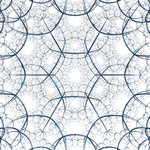 order-4 hexagonal tiling honeycomb (Poincaré disk model) |
| Vertex figure |  (Octahedron) |
 (Octahedron) |
 (Octahedron) |
 (Octahedron) |
|
| ||||||
|---|---|---|---|---|---|---|
| ||||||
| ||||||
| ||||||
| ||||||